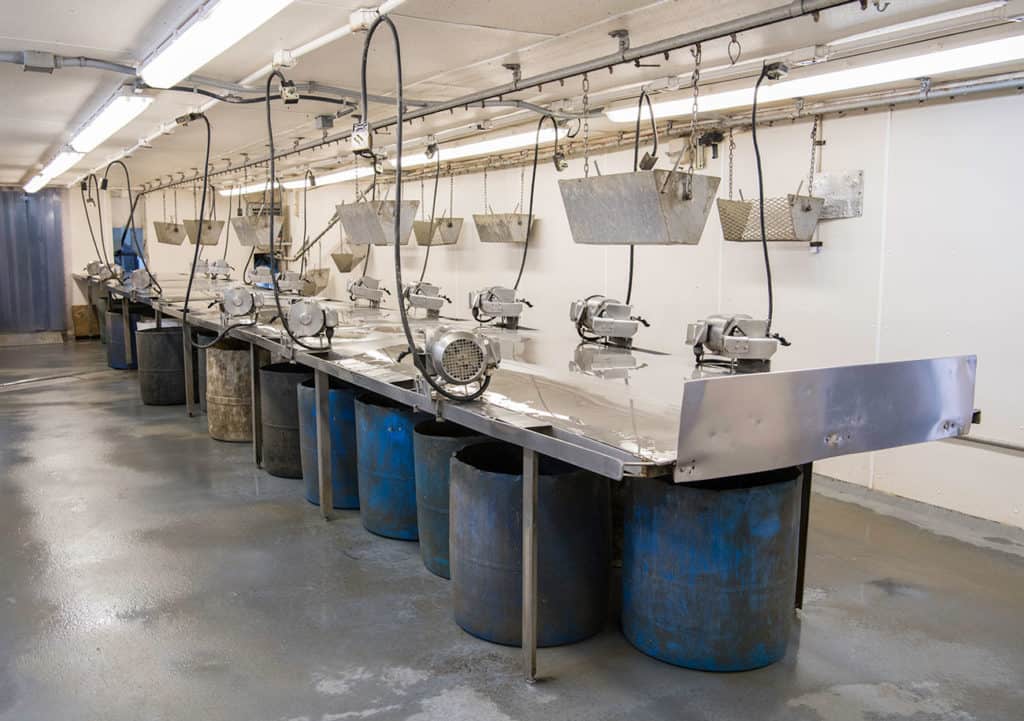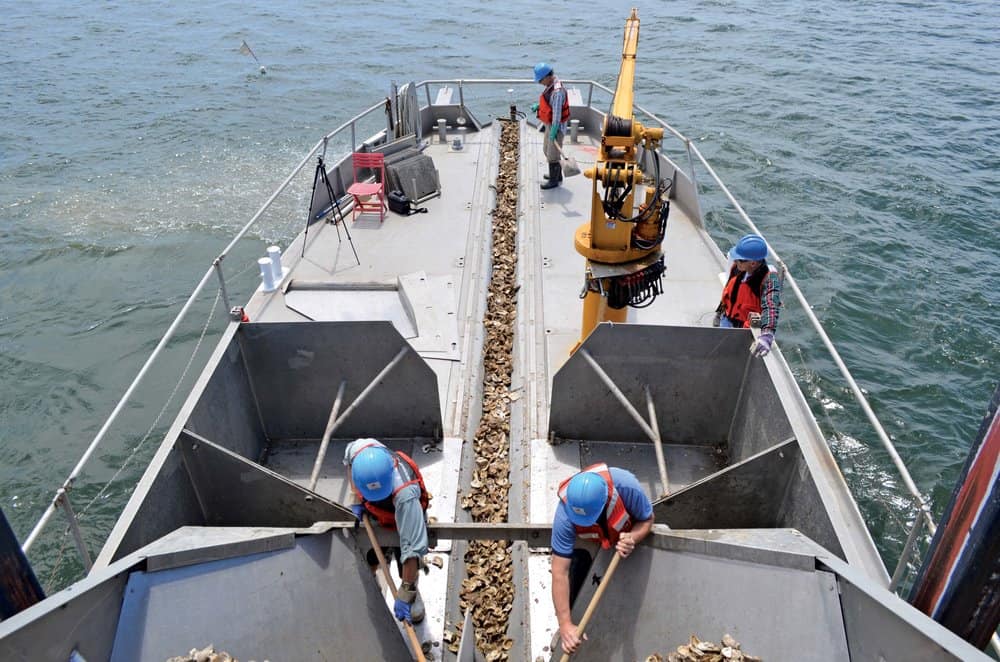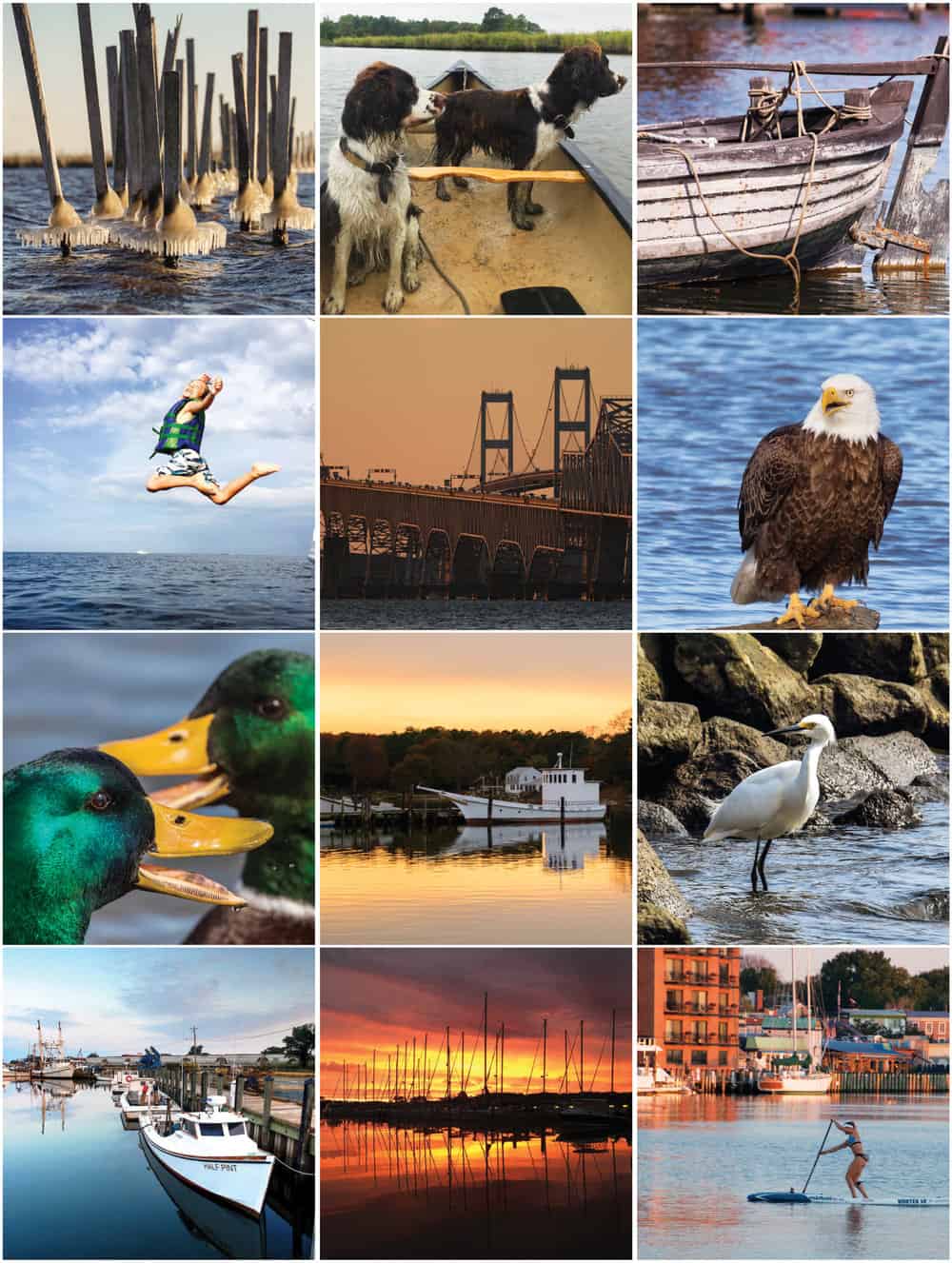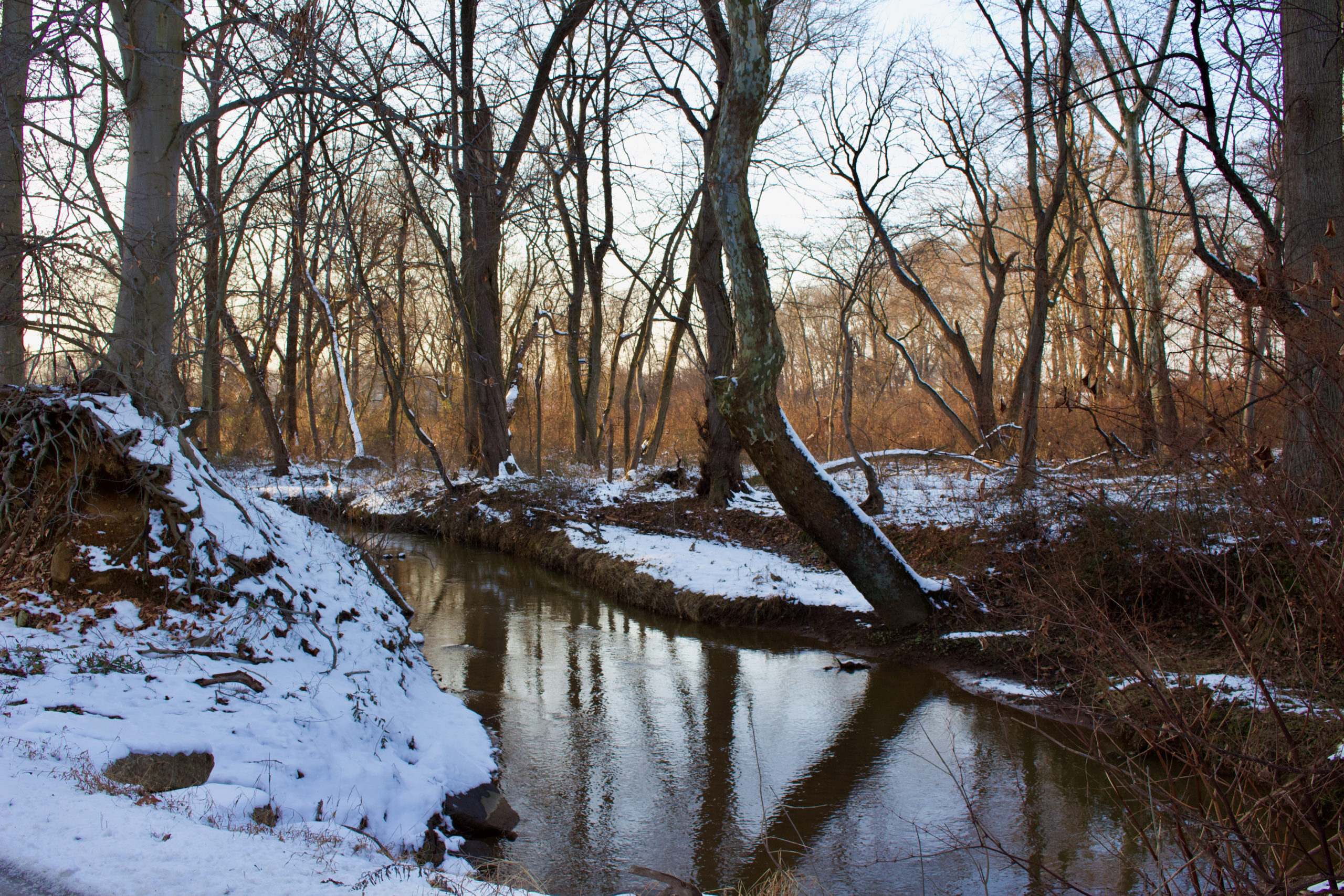Watermen and processors deal with falling demand and disrupted supply chains
In mid-March 2020, Maryland, D.C., and Virginia adopted strict social distancing measures to slow the spread of COVID-19, forcing the region’s restaurants to close their doors to dine-in services. While some restaurants continue to offer pick-up and delivery options, others opted to shut down entirely.
With restaurants operating at reduced capacity, demand for oysters, crabs, and fish plummeted. The economic shockwave was first felt by restaurants then spread to the rest of the supply chain.
Approximately 70 percent of all seafood consumed in the United States is consumed through restaurants. Without a consistent demand from the region’s restaurants, the Chesapeake Bay’s seafood wholesalers, processors, watermen, and aquaculturists responsible for supplying those restaurants were left to find other buyers to keep operations afloat.
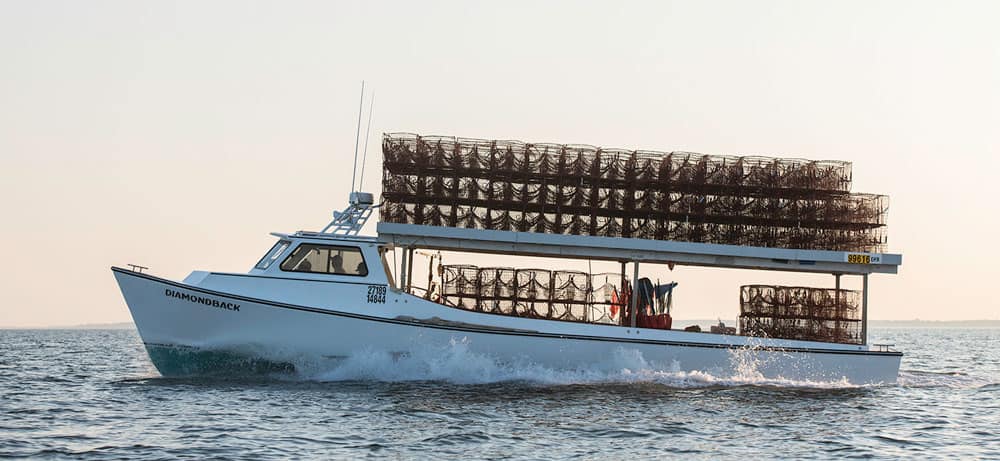
“We could see the writing on the wall”
As concerns about COVID-19 mounted in early March, Jason Ruth, co-owner of oyster shucking house Harris Seafood in Grasonville, Maryland, noticed a downturn in sales for shucked and live oysters. Restaurants consume the overwhelming majority of Harris’ packaged oysters, while only a small percentage goes to seafood retailers and grocery stores.
Then, on March 16, Governor Larry Hogan issued an executive order closing Maryland’s dine-in restaurants in an effort to contain the spread of the novel coronavirus. Virginia followed suit on March 23.
“When the governor made the official announcement that shutdown restaurants, many of our customers backed out of their orders that day,” Ruth explained. “We could see the writing on the wall and cut the oyster season short by two weeks.”
Truncating the oyster season meant that Ruth was no longer buying the daily catch from more than 100 boats, which harvested a total average of 1,100 bushels of wild oysters each day. Without oysters to process or sell, Ruth was forced to lay off 18 local shuckers, six laborers, and three of his management staff. According to Ruth, other shucking houses in Maryland and Virginia took similar actions after the market for oysters dropped out.
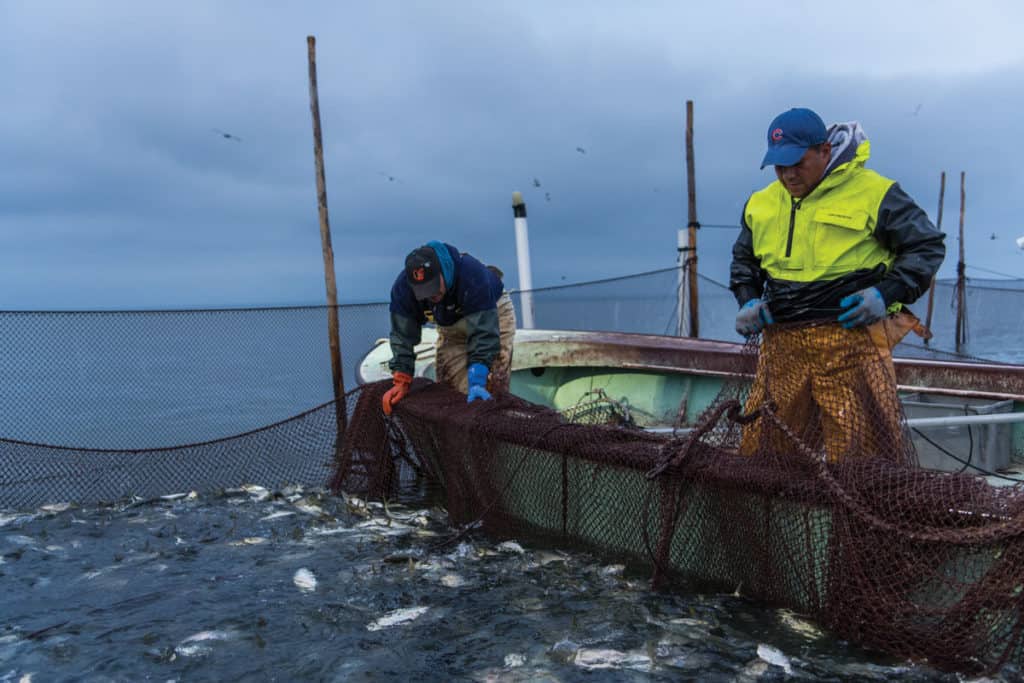
With shucking houses winding down early, watermen missed the chance to capitalize on the final stretch of a surprisingly robust oyster season. Despite predictions for a lackluster oyster yield in the 2019 to 2020 season, Ruth explained, “Watermen were still doing well, [and] certain gear types were catching limits until the end.” Ruth estimates that watermen could have harvested an additional 20,000 bushels from Maryland waters, amounting to $1-million in dockside market value.
Pound netters specializing in restaurant favorites such as white perch, flounder, striped bass, and black drum are also losing out on potential income. After dockside prices on summer flounder dropped from around $2.00 to 75 cents a pound, long-time Hoopers Island, Maryland pound netter Larry ‘Boo’ Powley claimed he could not remember a time when flounder prices were less than a dollar in the spring. Powley’s buyer also lowered the price of jumbo white perch to fifteen cents, down from the usual 80 cents to $1.00 this time of year. As fellow Hoopers Island pound netter Burl Lewis puts it, “The market for good fish is jammed up.”
Adapting under pressure
Before the coronavirus pandemic took root, Mike and Angelina Manyak, the husband-and-wife oyster farming team behind Sapidus (Happy Oyster) Farms in Reedville, Virginia, were gearing up for a banner year. The Manyaks had more than one million market-size oysters in the water that were ready for sale in 2020—up from just 300,000 in 2019—and they were expanding their market to new restaurants and catering companies.
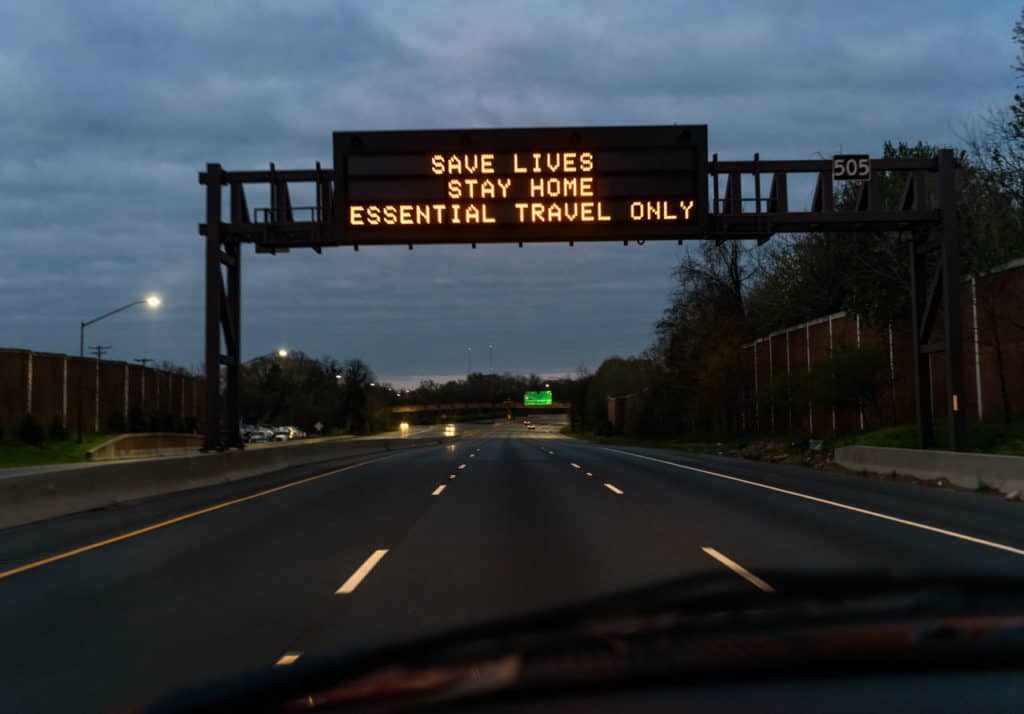
All that changed when the restaurant shutdown hit Maryland and Virginia. “Every event and order that we had lined up got cancelled,” Mike said. “Our sales were 100 percent gone.” And although they had restaurant customers who were still offering carry-out or delivery orders, Mike explained, those restaurants were not selling raw oysters due to temperature control and other food safety concerns.
The Manyaks immediately recognized they would need to explore new streams of revenue to keep their farm running. While restaurants can offer their dishes on mobile food delivery apps like DoorDash, GrubHub, and Uber Eats, these platforms are less adaptable to aquaculture operations like Sappidus Farms. The pair knew they would need to chart their own path.
Luckily, the couple’s experience distributing directly to restaurants in Maryland, D.C., and Virginia helped inspire a plan to get their oysters in the hands of consumers. Mike started working with a local waterman in Northumberland County, Virginia who harvests striped bass, hard crabs, and soft crabs.
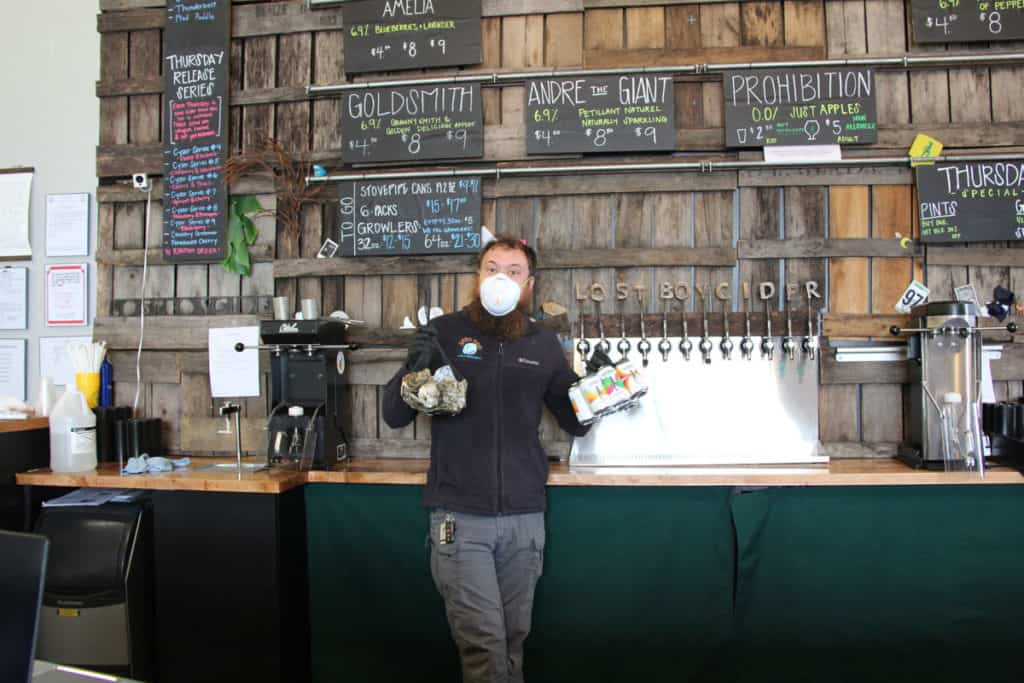
“We wanted to make our delivery service more appealing to people who aren’t big oyster eaters, and help local watermen get a higher profit margin,” Mike explained. After advertising through social media, friends, and family, the couple set up a location in Montgomery County, Maryland where customers could do contactless pickup—encouraging Paypal or Venmo payments in lieu of cash or credit.
The Manyaks are optimistic that this new market will sustain their oyster farm until restaurants reopen, and even hope they can continue selling directly to their customers in the future.
“The response was overwhelming,” Angelina said, “but I am not surprised since everyone loves Chesapeake Bay seafood.”
“The crabs will be crawling”
Maryland’s crab season began on April 1, just over two weeks into Maryland’s restaurant shutdown. Since then, Maryland crabbers have been reporting strong catches near the Maryland-Virginia line. Likewise, the crabbers of Virginia, who started crabbing on March 17, reported good catches of sooks, or mature female crabs, at the start of the season.
“It’s not a resource problem,” said Jack Brooks, co-owner of J.M. Clayton Seafood Company in Cambridge, Maryland. Sooks make up the bulk of the catch for crabbers working from the mouth of the Choptank River south to the mouth of the Chesapeake Bay. J.M. Clayton and other picking houses process sooks into the crab meat that restaurants use for dishes like crab cakes, crab soups, and crab dips.
With restaurant sales down, Brooks anticipates he will need to find new ways to get his products to the consumer. And although Brooks is hopeful that business from roadside stands and small retail markets will pick up, he cautions that this demand “wouldn’t come anywhere close” to making up for the loss of demand from the restaurants.
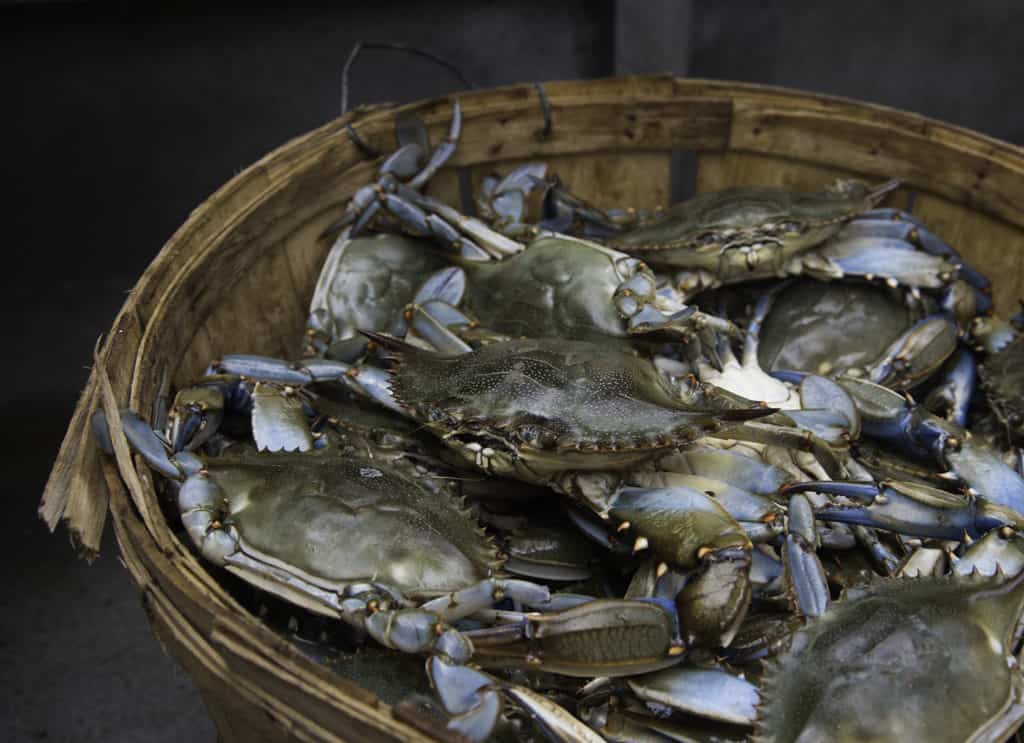
The coronavirus pandemic is not the only crisis crab picking houses encountered this year. By the start of the 2020 season, H2-B non-agricultural work visas, which permit laborers to enter the country to work for a business selected in the federal government’s lottery system, were not secured for six of the nine crab picking houses in Maryland. Similarly, Virginia’s largest crab processing house, Graham and Rollins in Hampton, had not secured its pickers by the start of the season, and smaller operations in Virginia suffered from the same lack of labor.
For the crab picking houses that were able to secure labor through the H2-B process, current travel restrictions aimed to curb the spread of COVID-19 prohibit many pickers from entering the country. And beyond that, J.M. Clayton, Russell Hall, and A.E. Phillips—the three Maryland picking houses that received H2-B visas—have expressed apprehension about operating at full capacity in light of the restrictions on the restaurants.
“Our picking room is not full,” said Brooks, explaining that J.M. Clayton brought in only 25 percent of the H2-B workers it employed last year.
With fewer pickers at work, the watermen who depend on selling female crabs to the picking houses will encounter decreased demand. This could be particularly devastating for watermen in the lower bay where the catch is predominantly female crabs.
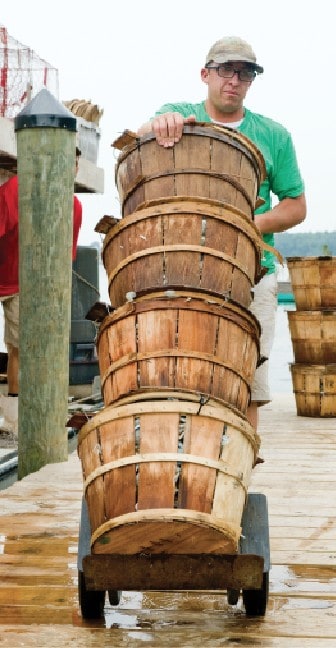
Ruth, whose Harris Seafood also buys crabs for catering events and distribution to restaurants, agrees. “At the start of the season, we are seeing off-the-boat prices that are one-half of what they were last year on females and about one-third less on males,” he said.
The already low price and the lack of market for female crabs could put more pressure on the male crabs, as well as concentrate crabbers in the fresher waters, where a larger volume of males could be caught. “Jimmies,” as they are commonly called, are easier to sell in a retail market or direct to the customer.
But like any other year, Kent Island, Maryland waterman Nick Crook and his crew–now operating as essential personnel under one of Governor Hogan’s executive orders—must stack upwards of 280 freshly painted crab pots on his workboat Diamondback in preparation for his harvest. Despite warnings about the market, Crook is hopeful for a strong yield on crabs as the season progresses.
“We don’t know what the human race will be doing for the next month, but we know that the crabs will be crawling,” Crook remarked. In line with this attitude, Crook plans to explore new channels of distribution to move his catch, including opportunities to sell crabs directly to the customer.
Though he recognizes that developing new means of distribution will not be easy, Crook is confident that consumer preferences will keep the market strong. According to Crook, “Maryland loves crabs.”
Ruth, too, can find a silver lining. “The oysters will be bigger next year,” Ruth said, “and they will spawn over the summer.”

